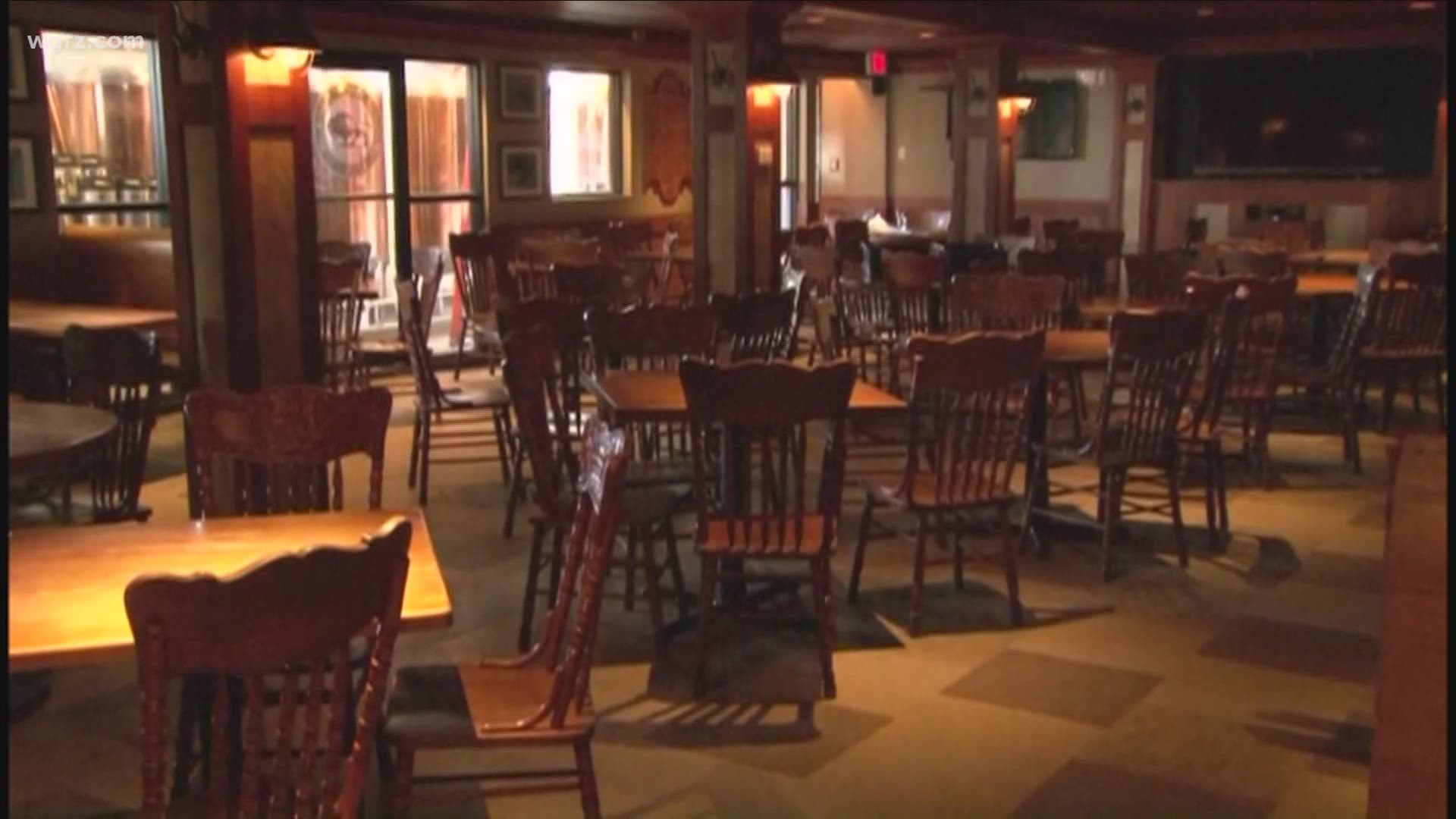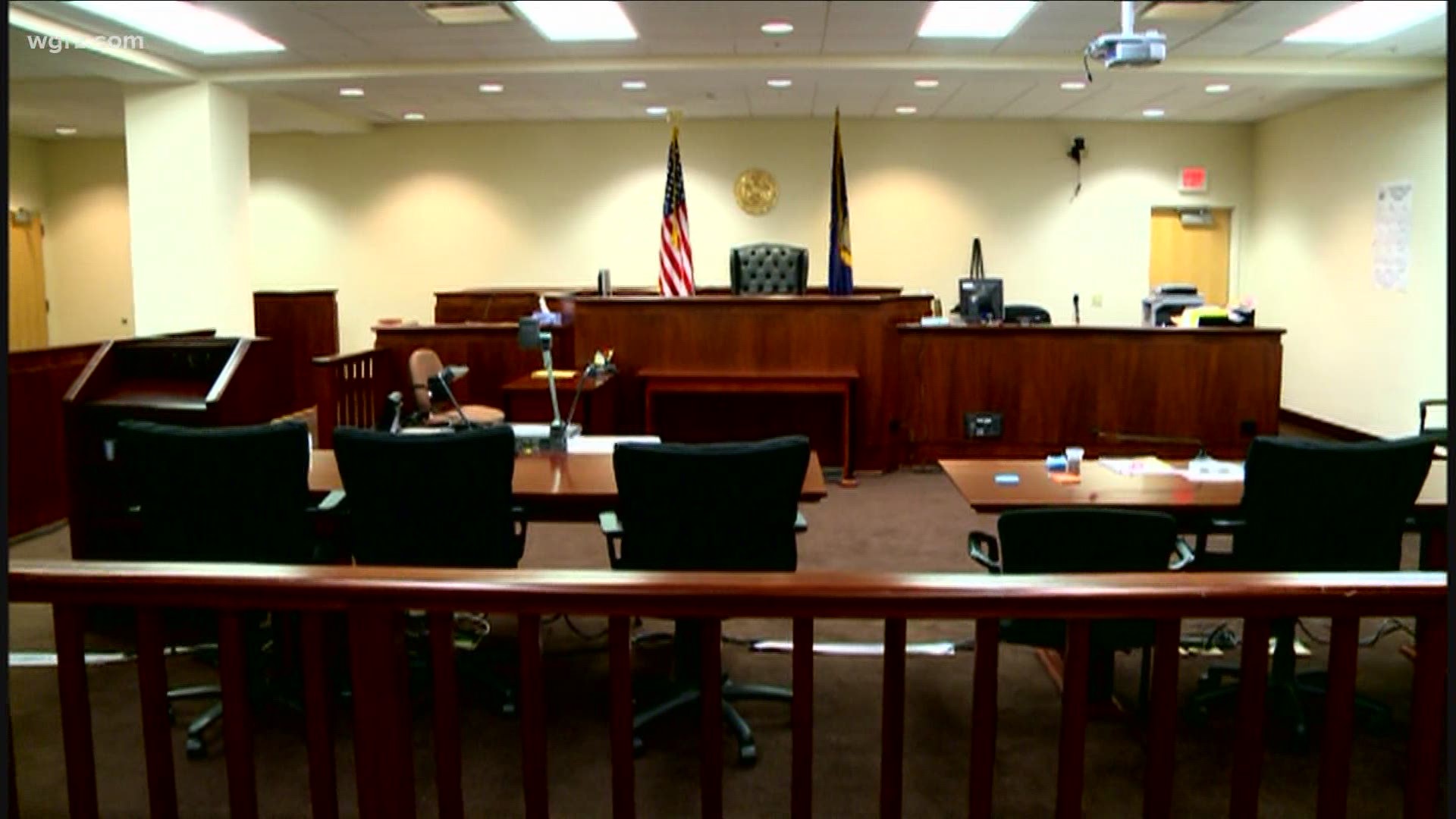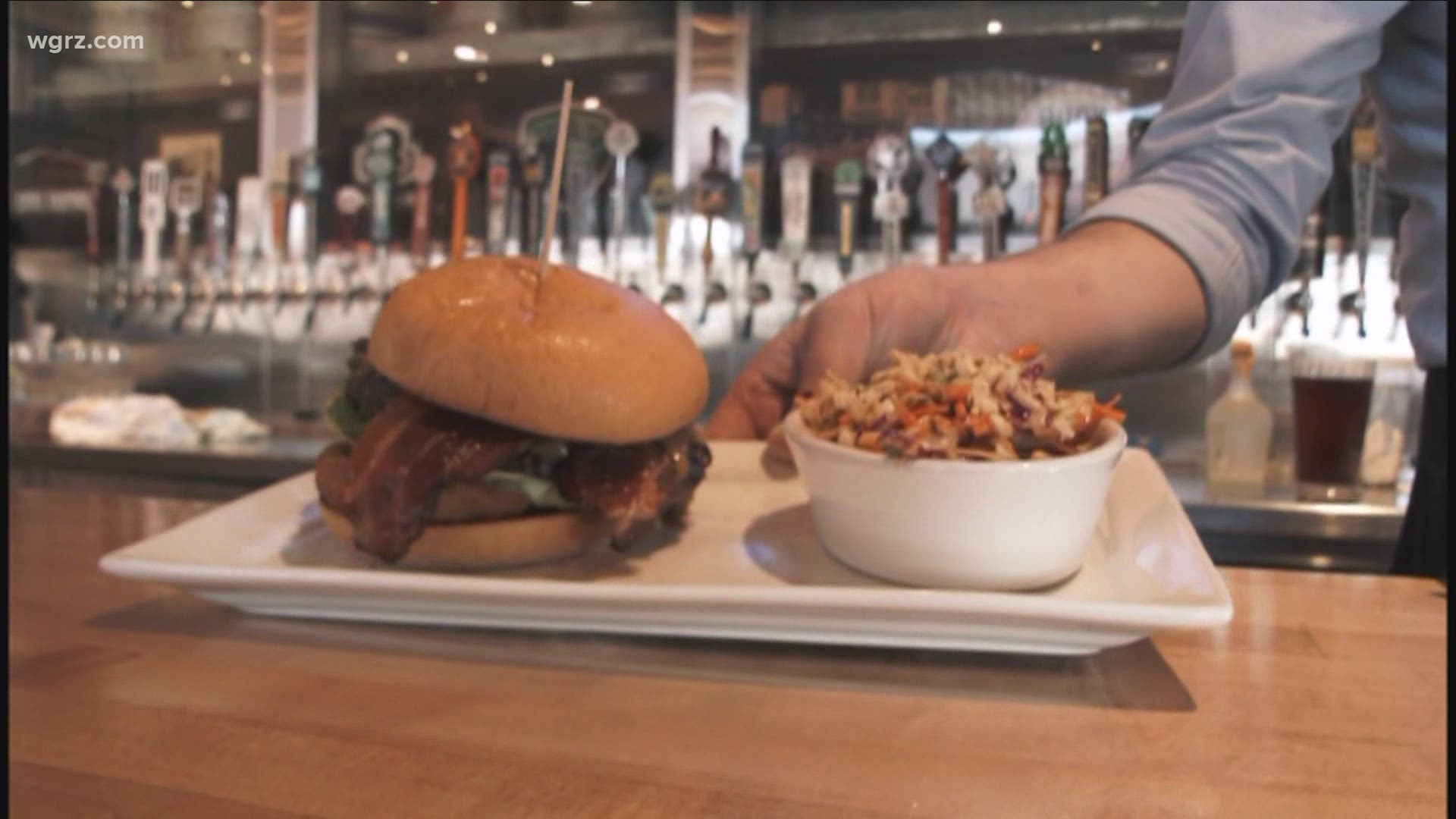BUFFALO, N.Y. — A judge has lifted a temporary restraining order that allowed nearly 100 restaurants to stay open past 10 p.m.
The ruling was announced Wednesday morning. It is signed by Appellate Court Justice Patrick NeMoyer. He was the U.S. Attorney for Western New York in the 1990s, then served as a State Supreme Court Justice before he was appointed to the appeals court by Gov. Andrew Cuomo in 2016.
That means the 10 p.m. curfew is back in effect for all restaurants and bars in New York State.
There will be arguments in the case next Tuesday in a virtual Zoom session before Justice NeMoyer.
Last week, another judge ordered the state's 10 p.m. curfew on restaurants that sued the state to be lifted immediately. Despite that ruling on Friday, Cuomo made it clear, as far as he is concerned, that the 10 p.m. curfew is staying in place for restaurants in New York State.
Even last Friday, Cuomo was asked if he would consider lifting the curfew for the Super Bowl, which kicked off at 6:30 p.m. He replied: "No. We're not thinking about changing the curfew for Super Bowl Sunday. Maybe if the Bills were in the Super Bowl, it would be a different conversation."
Previously Cuomo has stated his concerns. He told reporters, "When you keep the restaurants open late, that tends to be more problematic. It tends to be more crowded. it tends to be more drinking, etc."
The order was put in place by New York State to help prevent the spread of COVID-19. Restaurant owners say there is no justification for the curfew.
Attorney Corey Hogan of the HoganWillig Law Firm, one of the firms representing the 94 Western New York restaurants in the lawsuit said on Friday, "The problem with the rule, as we argued to the court, is there is no scientific justification for it. When they went out and found out where the viral spread came from, they said this is where it's coming from, they said 1.43 percent from restaurants. That's it, 74 percent from households."
Hogan also hinted at what he views as Albany's influence in this legal about face on the curfew and his concerns about the next hearing before the judge who signed this order.
He says, "Given the political landscape I don't know that we have a good shot on Tuesday. I think it's, a lot of its politics, it's not the law."
Hogan went on to say, "Those numbers have continued to fall. They've fallen I think every day. So why the state is interested in keeping these restaurants closed at 10 o'clock and beyond makes no sense in terms of the virus. These people are given their directions by the Governor. So they're doing what they have to do as lawyers. He's the one who's controlling the shots here. No one else is."
We also asked why Hogan thought the state decided to push back now instead of last month when another judge ruled against the ban on indoor dining and the state in turn lifted it along with the Orange and Yellow zone restrictions.
He replied: "I don't know why in this case they didn't do the same thing. Other than the concern that if they do it again, people will think that whatever we do in Buffalo, the rest of the state will benefit from. Maybe the governor doesn't what that impression so he directed his people to spend a lot of time and effort making a decision to try to void it. I don't think there's any legal justification for it."
James Minner, who also works with Hogan at the HoganWillig law firm, said some of their restaurant owner-clients were discouraged. Minner said, "The financial impact last weekend of being open past ten was so significant that in a lot of our clients' cases, they were able to double their revenue from the weekend before. Double their revenue on the weekend they had the 10 p.m. opening."
Minner added that restaurant owners are still suffering with their businesses especially now that they won't be able to stay open later on Valentine's Day weekend. Some have already been cancelling late reservations or telling staffers they won't be needed.
"They got to cancel food orders. Liquor orders. They're ordering food. How do you run a business if you don't, if you're going to be shut down tomorrow, open the next day, shut down the day after that. How do you prepare? How do you deal with staffing? How do you deal with employees?" Minner said.
While the curfew issue still has to be settled, Hogan says they are preparing for more potential legal action against the state. He says that if infection rates keep trending down, they could go after the 50 percent capacity limit for restaurants in the near future.
You can read the judge's order below:



